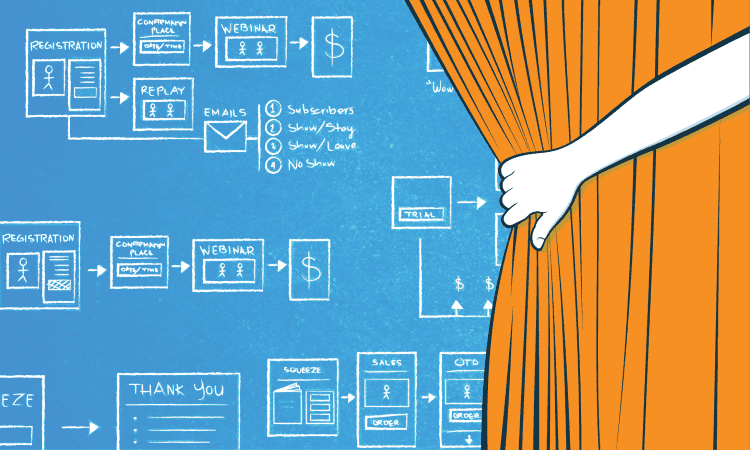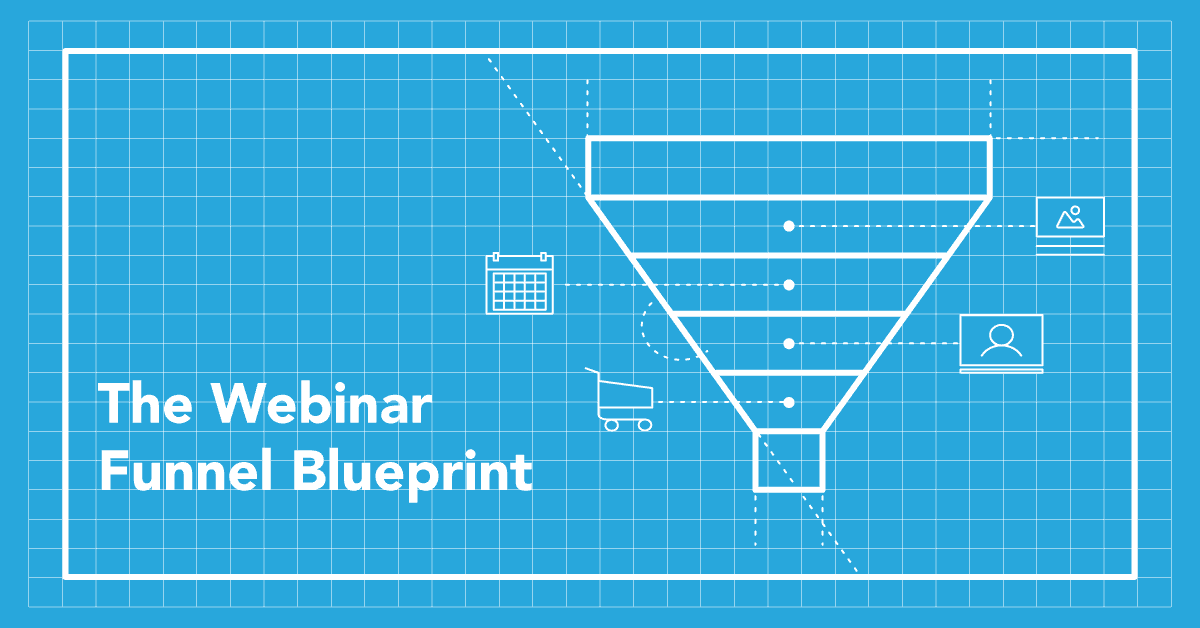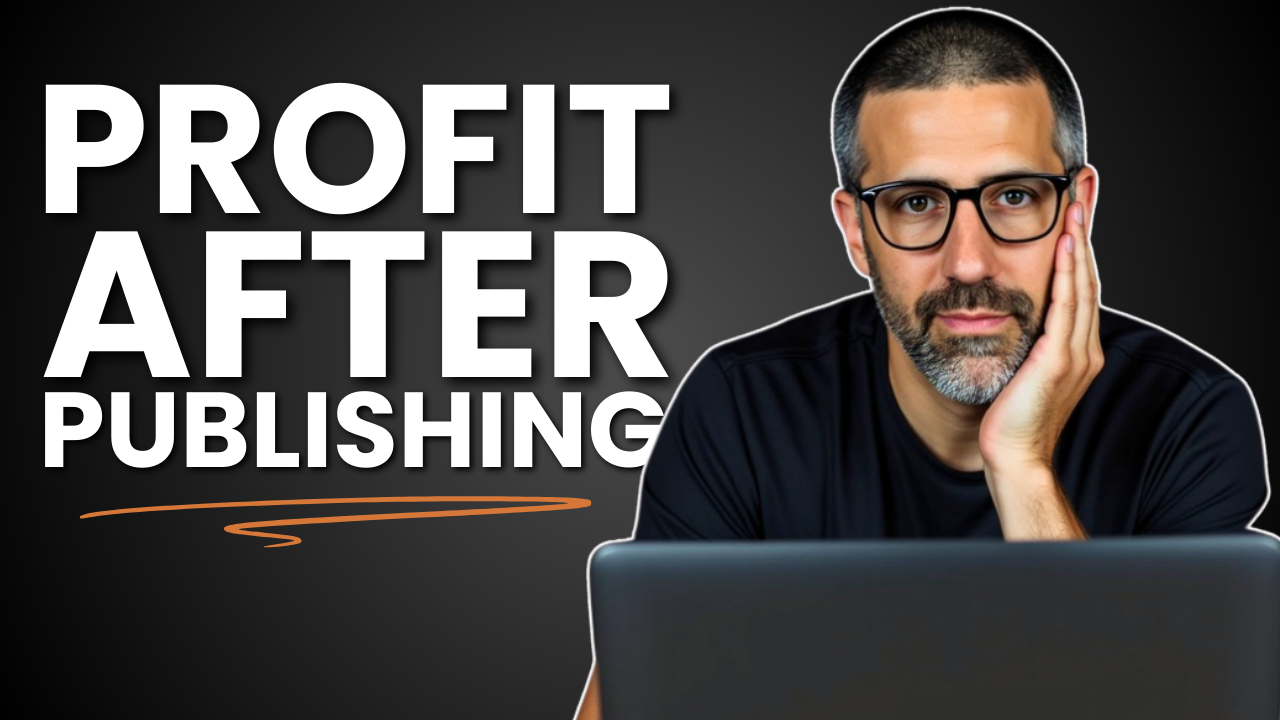
There’s never been a better time to build a business online. With the technology available, it’s now possible to leverage marketing automation to create predictable, and scalable marketing systems that nurture new leads and convert them into paying customers.
When done correctly, you can create a thriving business in a relatively shorter window of time. That’s because of the ability to get in front of our ideal prospect, build a relationship, and converting them into a customer, has never been this obtainable…
At the same time, there has never been a worse time for online business owners to be selling their products and services online. Competition is at an all-time high, the marketplace continues to get flooded with offers that sound and look alike (I’m looking at you coaches coaching coaches how to coach other coaches).
As marketers, the bigger challenge will continue to be capturing the consumer’s attention without breaking the marketing budget.
Behind the scenes doing the damn work
We’ve spent the last year implementing online marketing funnels for some of the top online entrepreneurs, thought leaders and experts.
We have built their marketing funnels.
We’ve automated workflows to save them time.
We have learned how different types of prospects make their way through the client journey.
As the cost per lead has gone up, our funnels have to get more intelligent.
We need to maximize the value of every lead that comes into our world.
With that, we’ve had to develop and deploy new strategies to sell to our audience when the time is right for them while moving them through the client journey…predictably and in a scalable way.
There are many strategies you could deploy in your business this year when it comes to your online marketing funnel but, after being behind the scenes, sleeves rolled up, doing the work with some amazing six and seven figure entrepreneurs, we wanted to share the five marketing funnel strategies that will be a must for any online business owner that wants to scale and has their eye on the long game.
1. Create Modular Marketing Funnels
We believe in No Leads Left Behind™.
That’s our core approach at System.ly when it comes to building scalable marketing funnels.
Due to this, we actually go to business a bit differently than we did before.
In order to have No Leads Left Behind™, we not only need well-thought out follow-up for all of our funnels but, we also need to address the different types of leads we’re attracting into the top of our funnels.
The last few years we’ve seen marketers push all of their leads into the same funnel. Essentially, treating every lead the same.
But that’s a big assumption and just not the reality when it comes to your client journey.
All leads are not created equal.
At least as it relates to their level of awareness of the problem you’re solving for them.
So, if each lead might be at a different stage of awareness in their journey…you can’t talk to them all the same way.
If we can’t talk to them all the same way…we can’t put them all in the same funnel.
That means your business can’t run on just ONE funnel. At least for the long term.
We’ll need modular funnels that can work independently of each other but when connected…can guide our leads along the right journey towards becoming a customer.
That means some leads will convert sooner than others but, you won’t be ruining the relationship with those that aren’t ready when you’d like them to be. This will result in conversions happening after the first 30 days…heck, we’ve seen leads convert multiple years later and then go on to become some of the most valuable clients.
Modular marketing funnels allow you to talk to leads based on where they are at in their journey and we need one for each stage of awareness. As Derek Halpern explains it, the three stages of customer awareness are…
The Oblivious
These are the folks that are just discovering they have a problem. They aren’t necessarily sure why or what caused. Because of that, you can’t go asking them to marry you right away. It will go way over their head. As you approach the oblivious in your lead generation initiatives, you need to go in with low-commitment asks. Think a blog post, or a piece of content or a simple checklist.
The Afflicted
These are the folks that know they have a solvable problem and are open to solutions. At this point, you can lead with the specific problem they know they are dealing with. At this stage, our marketing language gets a bit more specific but we need to engage in a way where we build the relationship, display our authority on solving the problem and introduce opportunities for them to move closer to a buying decision. We can ask a bit more of these folks than when they were Oblivious. That means we’re at a point in the relationship where we can ask for things like e-books, a video series, a challenge etc. It’s not a low commitment but we’re still not going in asking for marriage.
The Informed
These are the people that are ready to make a decision on the right solution. They’ve done their research, and this is where we take the relationship to the next level; by demonstrating how we’ve gotten results for people just like them. This is where we leverage stories, case studies etc, to show them the solution is possible…and we’re the ones to help them. At this stage, we’ve built enough of a relationship to take them out on a date. And by date, I just mean convince them to spend more time with us. Most often, this is where you see your webinars, sales calls, video sales letters etc.
Now that you understand all leads are not created equally and are not at the same place in their journey…we can’t treat them all the same.
By creating modular marketing funnels around each of these stages of awareness we put ourselves in the best position to nurture leads more effectively, convert more (even if that means a bit longer of a sales cycle for many) and ultimately allowing us to drive people into the funnel in the right place giving the best chance for maximizing the value of every lead.
This is hands down what we’ve experienced the most in building marketing funnels. If your webinar was working to your audience…well, duh, they were likely informed.
If it was working like gang busters and then you went to cold traffic and it was the opposite of gang busters…well…you’re likely putting Oblivious or Afflicted leads in a situation that was speaking to Informed peeps. Of course, it won’t work the same.
How do we get people into the right part of our funnel if we need modular funnels? I’m glad you asked because that’s the next important piece.
2. Perpetual Profiling
In order to know which part of our overall marketing funnel we should put people in…we need to give them opportunities to tell us about where they should be.
We do this multiple ways. Surveys, behaviors such as link clicks etc. More and more this is becoming common by deploying strategies that were introduced by folks like Ryan Levesque in his book called, The Ask Method.
At the end of the day, we need to capture info about our prospects at all times, hence, Perpetual Profiling.
If someone is new to joining our email list, this will often be executed while they lead is downloading a lead magnet.
Danny Iny demonstrates what this looks like in action below.

During the opt-in process, he’s capturing info about the leads which provides critical information on where in the customer journey they really are.
The profiling shouldn’t end here.
As you can see you can weave in opportunities to profile your subscribers once they are on your list too. My good friend Pat Flynn does this elegantly within the early part of his email nurture by getting his subscribers to click a link that best describes them.

There are always going to be opportunities to capture more info about our subscribers like Danny and Pat have shown us and this will let us know how when to advance people through our journey to becoming a customer.
While these are two examples of Perpetual Profiling, you can also get the needed info by leveraging behaviors such as:
- Completed surveys or quizzes
- Visits to specific landing pages
- Purchase of certain products in your product suite
- Leads magnets they’ve opted-in for
- And the list can go on. 😉
A lot of this profiling right now is leveraged to get people to buy and this is where I find most marketers fall short. That is they stop at the sale.
That’s actually where the real relationship starts.
3. Client Success Starts With Onboarding
What I love about automation is that we can continue creating predictable and scalable experiences even after people buy with us.
With tools like Infusionsoft or ActiveCampaign, we can track the progress of users as they invest in our programs and services to see where they are at within the fulfillment process of the programs/services we offer while making the experience as fun as possible.
You can see in the email below when we get a new client signing up for our Automation Advisor program that we welcome them using a fun little image that puts their name in the photo.

Then within our campaign, we want to make sure our team is aware of what tasks need to be done as it relates to onboarding this new client.
So after they get the nice email above, the following is also happening.
See below image for number references.
- We’re giving them access to a free course that we have.
- Is the email you see above
- A notification to our Account Manager to setup the client in our internal Project Management tool
- A notice to our support team to set up a few folders and automation on their side within our customer support tool
- If the client still didn’t take the requested actions 1 day later from the email we sent in #2, we send them a reminder.

So, while this is one example of how we’re using automation for new client onboarding, the point is that the journey doesn’t end at the sale.
[Tweet ““The client journey doesn’t end at the sale…It’s just getting started”.”]
4. Reverse Implementation
By this point you may be saying to yourself, “well, Greg, so you’re saying that I actually need multiple funnels to sell my one flagship product and service…that seems like a lot of work”.
And the answer is yes!.
I never said this was going to be easy but, if you want a scalable business that lasts, and gives you the best chance of converting all of your prospects when the time is right…it’s going to take work to get it right.
I’m not preaching get rich quick type stuff here. If that’s what you want, you can find it elsewhere.
But, there is a bright side my friend.
You don’t have to build your module funnel all at once.
In fact, we don’t recommend you try.
We always start with our private clients by implementing the funnel that is the closest to the sales opportunity.
That just so happens to be a webinar in many cases, but not limited to webinars by any means.
Remember how I said that your modular funnels should work independently of each other?
Well, when built correctly, you can build one at a time and get that ONE converting before connecting the next modular system on.
For example.
You build Funnel A…It’s only converting at 1% and you know it can be better because you’re speaking to informed buyers that know like and trust you already.
If funnel A is only at 1% why would you go build funnel B that connects to funnel A and start spending tons of money on traffic?
You’d be putting money into a leaking bucket.
That’s why we recommend you focus on reverse implementation and start building your funnels that are for Informed buyers first. Then, Afflicted and then Obvious.
One at a time so that as you reach colder and colder audiences, you’re driving people into a client journey that maximizes the value of every lead that enters.
Side note, you’d also want to start backward because you’ll generate cash flow faster by targeting your Informed buyers vs starting with Oblivious. This way you’ll have the cash flow to invest back into the business.
5. Start Simple.Get Ninja Later
Ok, so we know we need to build a couple different funnels over time that will eventually connect to each other.
Don’t let that overwhelm you.
Some of the best automation starts with manual beginnings.
What do I mean by that?
[Tweet ““A simple funnel that is DONE will always outperform the perfect funnel that’s still in your head. Start Simple, Get Ninja Later””]
You already know that we’ll be reverse implementing but that doesn’t mean it needs to be over complicated.
Sometimes setting up a campaign that has 1-3 emails ready now vs the 10 that will be needed is great to get live ASAP.
Then we can get real data from people going through those first few emails so we can make educated decisions on how to move forward.
Think “minimum viable funnel”.
What is the fewest amount of things you can implement for each modular funnel just so you can get it live?
Remember, done is better than perfect.
Once it’s live you’ll get ninja later…besides…despite marketing funnels leveraging automation…they are not “set it and forget”.
Our goal is to get each modular funnel live and get data in to make smart decisions.
When it comes to online marketing funnels, “If it’s live we can measure it. If it’s an idea we can fantasize”.
[Tweet ““If it’s live we can measure it. If it’s an idea we can fantasize”.”]
Get sh*t live!
6. Bonus: Tagging Tells The Story
Ok, bonus strategy!
And to be honest this really isn’t a strategy vs just a fundamental essential that you need to be successful when it comes to scaling your marketing funnels.
In order to effectively do everything we talked about above, you need to leverage tags within your marketing automation.
When I jump into a client’s app right when we start working, they typically have a lot of tags and they don’t know what any of them even mean or do anymore.
Does that sound like you?
We recommend you leverage a proven and simple tag naming convention. You should require everyone on your team to implement using these conventions.
By using a consistent and readable tagging naming convention you’ll have “Tags that Tell A Story”.
That means:
- You’ll know exactly where people are at within your funnel in real time
- You will know how each funnel is performing historically
- You’ll be able to advance people from one funnel to the next based on behavior
- You will streamline how your funnels are built because you (your team or contractors) will all be using the same naming convention…aka you’re all speaking the same language.
- Things get built faster when you speak the same language
- Everyone can understand what a funnel is meant to do and where people have been
For example, we use some different tag categories to tell the stories of what are leads are doing and where they’ve been. Here are the categories we use.
- 01. Status – These are temporary and tell us where a lead is right now
- 02. History – These tell us where a lead has been and what they’ve done
- 03. Customer – These identify customers both in general and by product
- 04. Profile – This captures important info like demographic, psychographic details of our leads
- 05. System – Think of these as the tags that talk to third party systems like EverWebinar, Zapier etc.
- 06. Engagement – These let us know when people engage with important behaviors like email opens, link clicks etc.
- 07. Membership – If we’re using any sort of course software, we use this category for access privileges.
- 08. Email Preferences – We don’t use this one too often but some of our clients like to send a weekly broadcast or segment people for emails that are a promo or event related.
- 09. To Do – These are tags we assign when we are notifying an internal team member of a task they have to do. Now with the use of integrations like Zapier etc, we’ve automated those notifications to assign tasks in our Project Management tool but we find them useful in many scenarios.
Now, you don’t have to use this system, but the point is you need a go-to system that everyone in your business adheres to.
We use Infusionsoft and they use tag categories, but other tools don’t offer this, so with those tools, we just put the category in brackets such as [01. STATUS] say if we’re using something like ActiveCampaign.
We’ve put together a little guide for Infusionsoft users if you want to check that out here.
We believe when implementing your funnel, you should start with the highest leverage point of your funnel. Time and time again that has been the webinar for our private clients. We’ve put together our go-to 5-Figure Webinar Funnel Blueprint.
If you’re ready to start profiting from webinars AND maximize the sales leveraging a smart follow-up system, just click below and let’s do this.




